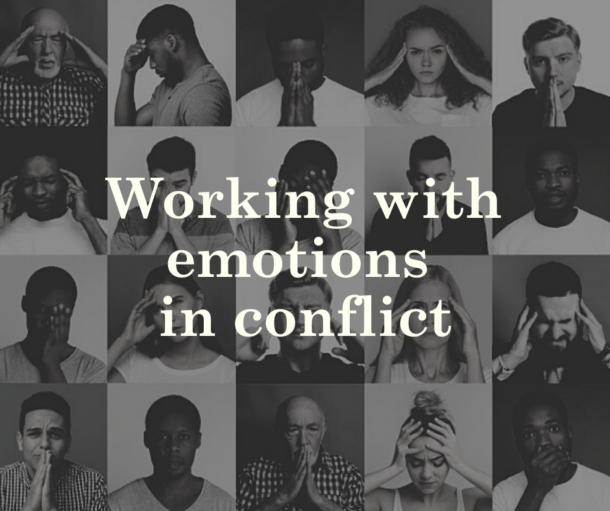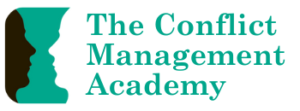Many people think about hope as an emotion that is akin to faith or wishful thinking.
However, hope theorists such as Snyder describe hope as a way of thinking.
The best thing about approaching hope in this way, is that it becomes something that we can learn (and support others to develop). For our purposes, hope is a very useful way of thinking in conflict!

Three elements of hope
Snyder defines hope as the “sum of the mental willpower and waypower that you have for your goals”. This definition has three elements: goal setting, agency and choices. Let’s have a look at each of these in turn.
First, a goal. For hope to be useful, it needs to be anchored to a concrete goal. Hope is best supported when the goal important to us, and we clearly understand and can represent it in our minds.
Secondly, hope requires as sense of agency (Snyder calls this willpower). This involves a sense of being able to influence our own future and work towards our goal. It involves motivation, determination and commitment.
The third element is identifying choices and pathways, (what Snyder calls waypower). This involves the capacity for pathways thinking. This is the ability to come up with mental plans or roadmaps that guide helpful thought and action towards our goal. It includes the ability to anticipate roadblocks and come up with flexible strategies to continue to work towards a goal in the face of obstacles (or to come up with a variation of our goal if necessary).
Hope in conflict
In conflict, hope promotes constructive conflict communication. It is associated with acquiring information and openness to opportunity, and can buffer against negative emotional flooding that can derail conflict management communication. As a forward thinking emotion, hope allows individuals and groups to see beyond barriers and envision a future where past difficulties are stepping-stones to future opportunities.
In conflict, the three elements of hope look a little like this:
- A goal in conflict situation refers to a clear idea of an imagined better future. A goal in this sense is not just your desired position (what you want), but rather a more detailed description of what it would be like if your underlying interests, needs and concerns were met. The goal should be expansive, not reductive.
- Willpower is about having a growth mindset about conflict. In other words, the individual has the expectation that they can meaningfully contribute to successfully resolving a conflict and they are motivated to engage in constructive conflict interactions.
- Waypower in conflict is about being able to identify multiple options and alternatives that could contribute to achieving the goal.
Developing hope in conflict
Up-regulation of hope is helpful in conflict (initiating, enhancing and maintaining feelings of hope). We can support people in conflict to access and intensify hope in conflict by working with the three components of hope. We can support people to develop clear and achievable goals, we can encourage them to develop agency thinking, and we can motivate them to identify multiple pathways towards achieving those goals.

Support the client to identify and explain specific, meaningful and achievable goals
Use a goal frame work like SMART, (but add a Y for yours, making sure that the goal is something that the client really wants, not something they believe they “should” want, and that is consistent with their values and needs).
Help your client to develop several attractive goals (short and long term), and prioritise them in order of importance.
Help the client to build on past choices and successes.
Support the client to identify past examples of goal achievement and overcoming obstacles using tools like appreciative inquiry.
Help the client to notice past situations in which they had opportunities for choice and agency. Build strong foundations for the client to identify and explore similar opportunities in the future.


Support the client to develop a constructive conflict mindset
Help the client to identify where they do have influence, control and choices. Reframe “I want” language into “I choose” language.
Support the client to see conflict as an opportunity and highlight opportunities for the client to become empowered.
Help the client to set up their environment for success – What does the client need to be in the best shape to enact this plan? What resources or support can they harness? What can they tweak in their environment to support their desired actions and outcomes?
Support the client to develop multiple pathways to a better future
Encourage divergent, lateral, creative thinking; brainstorm; encourage the client to use their imagination.
Help clients to chunk future actions into achievable and measurable steps.
Identify, reality test and prepare for potential obstacles. Develop some solid back up plans. Collate a range of “if / then” options.


Engage in rehearsals to practice different possibilities; reflect, revise and improve; and build confidence.
Create opportunities for the client to play with agency, to test out actions, to hear themselves speak and to imagine different possibilities.
Turn theoretically good ideas into practice, by practising them!
Build the client’s confidence, not just their knowledge. Help them to embody their action plan.
Want to know more?

One of the lessons in the Working With Emotions in Conflict online course is specifically about hope and expands on what was in this article.
Would you like to know more about how emotions impact on conflict and conflict resolution? Would you like to learn strategies to support people to respond effectively to other people’s emotions so that they can engage in conflict in a constructive way?
Check out CCI Academy’s new Working with Emotions in Conflict fully flexible online course. It includes over 20 hours of video lessons, plus additional written content and activities to apply your learning.
We are also offering you the opportunity to try Module 1 of the course (including over two hours of video content about Understanding Emotions and a downloadable workbook) for just $97 so you can try it out before committing to the whole course. Click here to access this special trial offer: https://www.conflictmanagementacademy.com/trial-module1-wwe/

